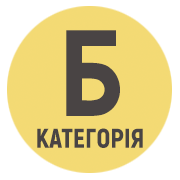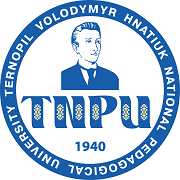CULTURAL LIFE OF THE YOUTH OF THE UKRAINIAN SSR IN THE SECOND HALF OF THE 1950–1980S IN THE VISION OF FOREIGN RESEARCHERS
DOI:
https://doi.org/10.32782/2307-7778/2025.1.23Keywords:
youth, students, Ukrainian SSR, cultural life, education, historiography, communist regimeAbstract
The purpose of the article is to clarify and evaluate the scientific achievements of modern for-eign historians on the problem of the cultural life of the youth of the Ukrainian SSR in the second half of the1950–1980s.The main attention is focused on the key aspects of the socio-cultural life of youth, which became the objects of study for researchers, and the interpretations of their influence on the national identity of youngresidents of the Ukrainian SSR. The special interest of foreign historians in the study of the life of youth inthe Ukrainian SSR in the paradigm of local history is emphasized. The scientific novelty lies in deepening and generalizing knowledge about the scientific achievements of modern foreign historians, dedicated to theproblem of the cultural life of young men and women of the Ukrainian SSR during the period of the systemic crisis of the communist regime. The article clarifies the degree of informativeness of research on the cultural life of the youth of the Ukrainian SSR, and identifies common features of the achievements of foreign historians in the study of this problem. Conclusions. Ukraine’s acquisition of state independence in 1991, its return to the world intellectual and geopolitical space caused an increase in the interest of foreign researchers in its past, in particular the history of the 20th century. In general, in modern foreign (primarily English-speaking)historiography, the cultural life of the youth of the USSR has become a full-fledged object of scientific study.At the same time, the state of research on the cultural life of the young generations of the Ukrainian SSR inthe second half of the 1950–1980s remains fragmentary: foreign historians address this problem mainly in thecontext of regional studies, and also episodically when studying youth movements in the former communist empire as such. The greatest attention of foreign historians is focused on such topics as the intellectual (par-ty-ideological) life of students, the influence of Western music (in particular rock music), on the everyday lifeof young men and women, as well as numerous youth subcultures. The absence in historiography, primarily English-language, of comprehensive works devoted to the full diversity of the cultural life of the youth of the Ukrainian SSR leaves a wide scope for further research.
References
Soviet Youth Culture / ed. by Jim Riordan. London : The Macmillan Press, 1989. 148 p.
Tromly B. Re-Imagining the Soviet Intelligentsia: Student Politics and University Life, 1948–1964 : dissertation of Doctor of Philosophy (History). Cambridge, Massachusetts, 2007. 541 p.
Kirmse S. B. Internationalist Nation-Builders : Youth under Brezhnev in the Soviet Union. Europe-Asia Studies. 2022. Vol. 74, № 7. P. 1254–1277.
Caroli D. History of higher education in Ukraine between Sovietization, linguistic discrimination and internationalization (1890–1972). CIAN-Revista de Historia de las Universidades. 2024. P. 129–160.
Risch W. J. The Ukrainian West. Culture and the Fate of Empire in Soviet Lviv. Cambridge, MA : Harvard University Press, 2011. 360 p.
Risch W. J. Soviet ‘Flower Children’. Hippies and the Youth Counter-Culture in 1970s L’viv. Journal of Contemporary History. 2005. Vol. 40, № 3 (Jul.). P. 565–584.
Youth and Rock in the Soviet Block. Youth Cultures, Music and the State in Russia and Eastern Europe / ed. by W. J. Risch. Lanham : Lexington Books, 2015. 310 p.
Zhuk S. I. Popular Culture, Identity, and Soviet Youth in Dniepropetrovsk, 1959–84. The Carl Beck Papers in Russian & East European Studies. 2008. № 1906. 68 p.
Zhuk S. I. ‘Soviet Young Man’ : The Personal Diaries and Paradoxical Identities of ‘Youth’ in Provincial Soviet Ukraine during Late Socialism, 1970–1980s. Australian and New Zealand Journal of European Studies. 2013. Vol. 5, № 2. P. 24–36.







